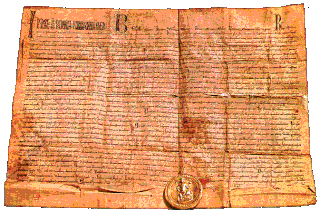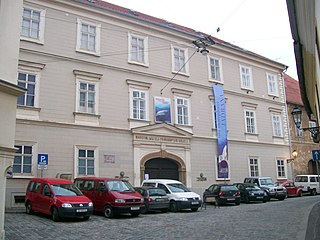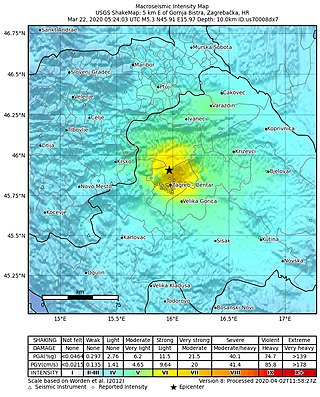
Zagreb is the capital and largest city of Croatia. It is in the north of the country, along the Sava river, at the southern slopes of the Medvednica mountain. Zagreb stands near the international border between Croatia and Slovenia at an elevation of approximately 158 m (518 ft) above sea level. At the 2021 census, the city itself had a population of 767,131, while the population of Zagreb metropolitan area is 1,086,528.

Milan Bandić was a Croatian politician and the longest-serving mayor of Zagreb, the capital of Croatia. Bandić was mayor almost continuously from 2000 to 2021, except during the time between his resignation in 2002 and the 2005 election. He was also suspended from exercising his powers and duties for several months after his 2014 arrest over a corruption scandal. Out of Bandić's multifaceted engagement in politics, the most noted part was his mayoralty of Zagreb, which followed the Croatian Democratic Union's (HDZ) first post-socialist period of government (1990–2000), and exacerbated many existing transitional problems in the city.

Ban Jelačić Square is the central square of the city of Zagreb, Croatia, named after Ban Josip Jelačić. Its official name is Trg bana Josipa Jelačića and is colloquially called Jelačić plac.
The Nova Ves is a historic street north of the Kaptol neighborhood in Zagreb, Croatia. It is administratively within the bounds of the Gornji Grad - Medveščak city district. According to the 2001 census, the street and its surrounding area had 3,456 inhabitants. In 2009, it had a population of 3,575. From the first habitation to date, the street has had a rich history as an important part of Zagreb ever since the beginnings of the modern city.
The history of Zagreb, the capital and largest city of Croatia, dates back to the Middle Ages. The Romans had built a settlement, Andautonia, in present-day Ščitarjevo. The name "Zagreb" was first used in 1094 at the founding of the Zagreb diocese in Kaptol, after the Slavs had arrived in the area. Zagreb became a free royal city in 1242. It was made the capital of Croatia in 1845 and elected its first mayor, Janko Kamauf, in 1851. According to the 2011 Croatian census, Zagreb had 792,875 inhabitants and was also Croatia's largest city by area.

Jazovka is a pit in the Žumberak Mountains area of Croatia, known as a site of mass executions and burials associated with Partisan activities during and after World War II. Hundreds of wounded Croatian soldiers from Zagreb hospitals and civilians were dumped in the pit. Some were already dead, but others died of exposure and injuries. Since the site was rediscovered in 1990, when more 800 skeletons were found, an annual pilgrimage has been organized.
Elections were held on 15 May 2005 in Zagreb, the capital of Croatia. Following the last local elections in 2001, Milan Bandić of the Social Democratic Party of Croatia (SDP) had been re-elected as the mayor of Zagreb. In 2002, an incident made him resign in favor of Deputy Mayor Vlasta Pavić, also from the SDP. Pavić remained formally in control of the city until 2005. In the 2005 elections, she was moved down the list of candidates to the 16th place, while the list holder and SDP's candidate for mayor was Bandić.

The Golden Bull of 1242 was a golden bull or edict, issued by King Béla IV of Hungary to the inhabitants of Gradec during the Mongol invasion of Europe. By this golden bull, King Béla IV proclaimed Gradec a royal free city. The document was issued on 16 November 1242 in Virovitica and reaffirmed in 1266. The original is written on a piece of parchment 57 by 46 centimetres in size, and is kept in strictly controlled conditions in the Croatian State Archives in Zagreb, while a copy is exhibited in the Zagreb City Museum.

The Old City Hall is a complex of three adjacent buildings located in the Gradec neighbourhood in Zagreb, Croatia. The three buildings were joined in the late 19th century and since then, the complex has served as the place where all sessions of the city assembly are held.

Zagreb City Museum or Museum of the City of Zagreb located in 20 Opatička Street, was established in 1907 by the Association of the Brethren of the Croatian Dragon.

Amadeo's theatre was founded in Zagreb, Croatia, in 1797 and lasted until 1834. It was the first continuously operating theatre in Zagreb.

Kockica is a 10-story mixed-use building located at Prisavlje 14 in Zagreb, the capital of Croatia. It was originally built to house the Central Committee of the League of Communists of Croatia and currently serves as the headquarters of Ministry of Maritime Affairs, Transport and Infrastructure and Ministry of Tourism of Croatia. Croatian architect Ivan Vitić planned the building, the construction of which began in 1963. However, the construction was delayed because of the 1964 Zagreb flood, and the building was finished in 1968.
New Left was a social-democratic and democratic socialist political party in Croatia. It also promotes anti-fascism, environmentalism, and progressivism on social issues.

The City Assembly of the City of Zagreb is the lawmaking body of the Croatian capital of Zagreb. It consists of 47 members who were elected by universal suffrage and secret ballot at 2017 elections for a term of four years. The assembly meets at the Old City Hall, close to the St. Mark's Square. This representative body passes acts within the self-governing scope of the City of Zagreb and performs other duties in accordance with the state laws and its own Statute. The assembly serves as a check against the mayor in a mayor-council government model. It has 24 permanent and occasional working bodies with oversight of various functions of the city government.
Stanko Fabris was a Croatian architect. After completing his secondary education in his hometown of Split, Fabris enrolled at the Académie Royale des Beaux-Arts in Brussels. Following graduation, Fabris worked as a planner in the administration of the Littoral Banovina. From 1942 he worked in Zagreb, first in the Z. Franjetić construction company and later in the Zagreb Designer Bureau where he would spend most of his life before retiring in 1980.

At approximately 6:24 AM CET on the morning of 22 March 2020, an earthquake of magnitude 5.3 , 5.5 , hit Zagreb, Croatia, with an epicenter 7 kilometres (4.3 mi) north of the city centre. The maximum felt intensity was VII–VIII on the Medvedev–Sponheuer–Karnik scale. The earthquake was followed by numerous aftershocks, the strongest of which with a magnitude of 5.0. It was the strongest earthquake in Zagreb since the 1880 earthquake and caused substantial damage in the historical city center. More than 1,900 buildings were reported to have been damaged to the point of becoming uninhabitable. The earthquake was also felt in Slovenia. One person was killed and 27 others were injured.

Tomislav Tomašević is a Croatian politician, activist, environmentalist and political scientist who has served as the 53rd mayor of Zagreb since 2021. He is one of the leaders of the local Zagreb is OURS! political party and the national We Can! political party. Since the 2017 Zagreb local elections, he has been a delegate in the Zagreb Assembly. He was also elected to the Croatian Parliament in the 2020 election. He serves as the de facto leader of the Green–Left Coalition.

On the night of 24–25 July 2020, after 21:00 local time, Zagreb, Croatia, was struck by a storm which produced one of the worst flash floods in the city's history. An episode of intense rainfall dumped more than 50 millimetres (2 in) of rain within two hours. The torrential streams of the mountain overlying Zagreb surged and overwhelmed the city's combined sewer system, causing flooding. The effects were worst felt in the inner city, notably Ilica, Donji grad, and Trnje, though many suburbs were also affected, including Buzin, Črnomerec, Jankomir, and Maksimir. Public transport and automobile traffic ceased in many streets, while trapped people had to be rescued from flooded cars and apartments. A firefighter died at an intervention. No financial estimate of damages was released by the authorities. The city government reported receiving over 2,000 damage claims during an eight-day filing period.
Villa Kallina is a historic country house in Zagreb, Croatia built by Vjekoslav Bastl as the family residence for the wealthy industrialist Josip Kallina's son Gustav.





















